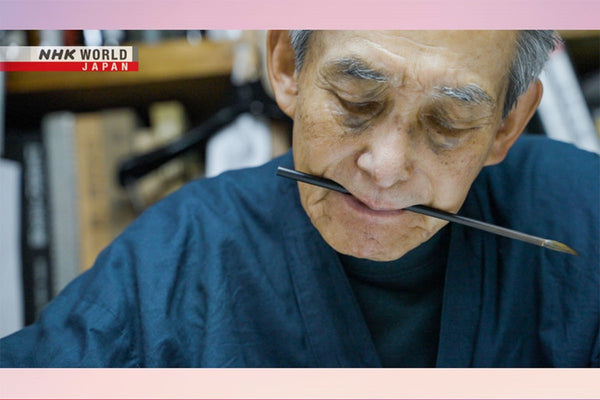From Wednesday, August 21st to Sunday, August 25th, we will be hosting an exhibiton of Kyoto Yuzen artist Tabata Kihachi V, along with a special exhibition of a Triptych by Miyazaki Yuzensai.
Miyazaki Yuzen-sai, originally a fan painter from Kyoto has left a massive legacy on the world of Japanese textiles, so much so that the technique he perfected was named after him. Work by Yuzen himself are extremely rare today.
Among the many exquisite works in the Tabata family collection, Ginza Motoji has been given the oportunity to display one of the most preciouis works from the Tabata Family Collection, A tryptych by Miyazaki Yuzensai.
The exhibition will showcase the exquisite work of Miyazaki Yuzensai, alongside new works by Tabata Kihachi V, inspired by Yuzen-sai's hanging scrolls and fan paintings. This special five-day event offers a unique opportunity to see these masterpieces across time, displayed together in the same space. We invite you to visit and enjoy the exhibition. Key points of interest: "Miyazaki Yuzen-sai's Three-Panel Set" and the Autumn New Works Exhibition by the 5th generation Tabata Kihachi.
On Display For a Limited Time
A Triptych by Miyazaki Yuzen

Shōjō (猩猩) with Climbing Carp, Descending Carp; Yuzen, Triptych Hanging Scrolls (Edo Period, Genroku Era 1688–1704)
This piece is one of the hanging scrolls believed to have been commissioned by Lord Maeda of Kaga, and distributed to various daimyos during his later years in Kanazawa. The scrolls feature depictions of shōjō (a mythical orangutan like spirit.) and carp, with every element, from the characters to the entire mounting, meticulously dyed on a single piece of silk using the Yuzen technique. The vibrant and lively artwork exemplifies the brilliance of Yuzensai's later years, showcasing his exquisite brushwork and masterful techniques.
2.Miyazaki Yuzensai and Yuzen Dyeing

Triptych Detail
Yuzen dyeing is a renowned Japanese pattern-dyeing technique that developed during the Edo period. Famous varieties include "Kyo-Yuzen," "Kaga-Yuzen," and "Tokyo-Yuzen," all of which share the characteristic technique of using "Itomenori" (resist paste) to outline patterns, preventing colors from mixing. This resist-dyeing method allowed for the creation of colorful patterns resembling paintings, enabling free and intricate pattern expression.
The name "Yuzen" originates from Miyazaki Yuzensai, an artist active during the Genroku era (1688–1704) of the Edo period in Kyoto. He was initially famous for painting fans, which became extremely popular, leading him to design patterns for kosode (a type of kimono). His design collections, or Hinagata , gained widespread acclaim all over Japan, resulting in his lasting legacy.
Although Yuzensai's early life is somewhat obscure, one theory suggests that he was born in Ishikawa Prefecture, became famous as a fan painter in Kyoto, and later returned to Ishikawa in his later years, where he further propagated Yuzen dyeing, contributing to the establishment of Kaga-Yuzen. He is believed to have lived for 83 years.
3.Collected by the Tabata Family for Generations.
About the Tabata Collection

(Right) A kimono by Tabata Kihachi V (2023), inspired by a kosode from the Tabata Collection displayed on the left (produced in the kanbun era (1661-1673).
The Tabata family, who have been part of the textiles world for many generations, possess a rare collection of Japanese textiles known as the "Tabata Collection."
This collection spans a wide range of items, including kosode (a precursor to modern kimono), classical dyeing techniques such as Tsujigahana, Noh costumes, folk textile works, and design pattern books for kimono. As a privately assembled collection, it is remarkable both in quantity and quality.
The origins of the collection date back to Tabata Kihachi II, from the late Edo period to the early Meiji period. The Tabata family primarily served in creating kimono for the imperial and feudal lords. However, with the collapse of the shogunate following the Meiji Restoration, the samurai class faced economic hardship. The generous second-generation Kihachi was moved by the desire of samurai parents to create wedding attire for their daughters and offered to make celebratory garments free of charge. However, to maintain their dignity, the samurai families offered their inherited textiles in return.
Tabata Kihachi III, was the first Yuzen artist to be designated as a Living National Treasure, was also passionate about collecting fine textiles. As a result, the Yuzen reference materials gathered by the fifth generation include approximately 3,000 kosode alone.
The Tabata family’s collection is not something that was hastily assembled through wealth alone. It was painstakingly gathered over many years, selected with the discerning eye that only a master textile artist could possess. As a result, it has become an unparalleled private collection of the highest caliber.
4.Recent Work by Tabata Kihachi V
Please take a look at the exquisite works that have been carefully selected by the fifth generation Tabata Kihachi V from the vast Tabata Collection, including hanging scrolls and fan paintings by Miyazaki Yuzen-sai. These works have been used as reference and and expressed in light of contemporary aesthetics in the form of Obi.
Nagoya Kyusun Obi
「Wheel of Fans and Arabesque Scrollwork」
The original work in the Tabata collection is dyed with just the shibori tye-dye technique, and embellished with embroidery. Tabata V has reimagined the pattern in Yuzen, with Suri-Bitta*(摺匹田) filling one of the fans.
*Suri-Bitta is a stencil dyeing technique, popularized in mid Edo period to imitate the look of kanoko shibori which was banned under sumptuary laws.

Photo of Kosode from the early Edo period from The Radiant Beauty of Kosode: The Tabata Family Collection(かがやける小袖の美 田畑家コレクション)
Take a closer look at this work
Nagoya Kyusun Obi
「Basket and Plum 」
Once again inspired by a work from his family collection, Plum Flowers are decorating an abstracted woven basket. This obi is once again executed in Yuzen and Suri-Bitta.

Photo of Kosode from the mid Edo period from The Radiant Beauty of Kosode: The Tabata Family Collection(かがやける小袖の美 田畑家コレクション)
Take a closer look at this work
Kyusun Nagoya Obi
「Flowers and Rhombi」
Flowers are beautifully juxtaposed with a graphic element, making the work feel elegant and contemporary.

Uchikake from theThe Tabata Family Collection
Take a closer look at this work
Nagoya Kysusun Obi
「Crane and Tortoise Shell」
The motifs on this obi are based on a maru obi (now largely extinct, double sided brocade obi) desgined by Tabata Kihachi III. The talents of the third-generation Kihachi flourished during the pre-war era of a prosperous Japan, when the zaibatsu (powerful financial conglomerates) often commissioned lavish kimonos and obi. From grandfather to grandson, the obi has been beautifully transformed into a refined and contemporary work of art.

Turtle Shell and Crane (c.1932)
Take a closer look at this work.
Nagoya Kyusun Obi
「Plum Blossom」

With motifs drawn from a furisode kimono depicting the four seasons by Tabata Kihachi III, Tabata V isolates the plum branch, and executes it in on a chic black background. The original furisode was produced by Tabata III in a turbulent time after World War II, where almost all tools for the production of his kimono were scarce. This kimono was used as a cover for the book of the Tabata Collection.

Four Seasons Coffered Ceiling Motif - Furisode (Post War, 1945)
Take a closer look at this work
Kyusun Nagoya Obi
「Shochikubai (Pine, Bamboo, Plumblossom)」
A classic pattern, Shochikubai, excecuted in marvelous blues and coral, and a warm gold. This work is inspired by a kimono from the Edo Period.

Take a closer look at this work
Kyusun Nagoya Obi
「Flowing Water and Bamboo」

Flowing Water and Bamboo Grass
Nagoya Kyusun Obi
「Bamboo and Chrysanthemum」
The suri-bitta technique, also seen in the mid-Edo period kosode with the 'bamboo and chrysanthemum pattern,' is one of the characteristic methods passed down through the Tabata family."

Bamboo and Chrysanthemum
Click here to take a closer look
Kyusun Nagoya Obi
「Hinoki Fan」

This obi is based on a luxurious kosode with a black background scattered with hinoki fans. Upon one of the fans, the crest of the Tokugawa family is visible, indicating that this garment was connected to the Tokugawa clan.

Kosode from the Early Edo Period
Take a closer look at this work
Source Material
1) "The Radiant Beauty of Kosode: The Tabata Family Collection" (1990, Asahi Shimbun Publishing)
『かがやける小袖の美 田畑家コレクション』1990 年朝日新聞社
2) "The Splendor of Kyo-Yuzen: The Art of Living National Treasure, Third Generation Kihachi Tabata" (2001, NHK Kinki Media Plan)
『京友禅の華 人間国宝 三代 田畑喜八の美』2001年 NHKきんきメディアプラン
Read More About Tabata Kihachi V and his Legacy.
"The Reiwa Kanbun Kosode Revival exhibition will be held from Friday, August 25th to Sunday, August 27th, featuring a special kosode based on works from the 350-year-old Tanabata Collection. Using this collection as inspiration, the fifth generation of the Tanabata family, Tanabata Kihachi, has created new kosode for the Reiwa era."
Trends in Time - A look into the Changing Styles of Kosode during the Edo Period
"However, in the early Edo period, during the Keicho era(1596 to July 1615.), kosode took on a different style compared to previous generations. There emerged sections with dynamic elements such as cloud and mountain shapes. The background was no longer merely a backdrop but often played a role as a pattern that contributed to the overall design."
Tabata Kihachi & GINZA MOTOJI featured on NHK WORLD (2023)
"FRONTRUNNERS highlights professionals at the very forefront of their field. We showcase their amazing work, discover their motivations, and learn about the challenges they face in the future."
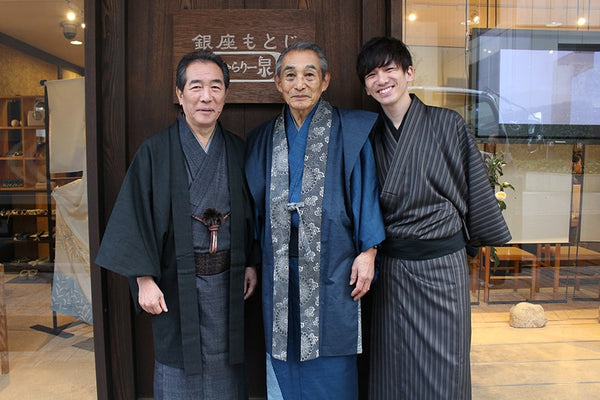
Tabata Kihachi V with Ginza Motojis founder, Motoji Koumei, and the Current Director, Motoji Keita in 2018.
 名古屋帯
名古屋帯
 袋帯
袋帯
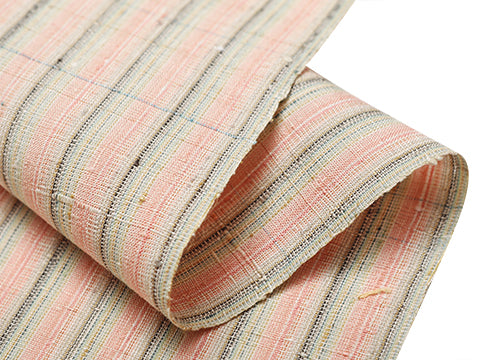 紬・綿・自然布
紬・綿・自然布
 小紋・江戸小紋
小紋・江戸小紋
 訪問着・付下げ・色無地ほか
訪問着・付下げ・色無地ほか
 浴衣・半巾帯
浴衣・半巾帯
 羽織・コート
羽織・コート
 肌着
肌着
 小物
小物
 履物
履物
 書籍
書籍
 長襦袢
長襦袢
 小物
小物
 帯
帯
 お召
お召
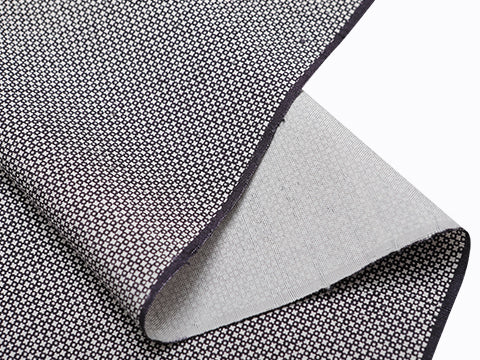 小紋・江戸小紋
小紋・江戸小紋
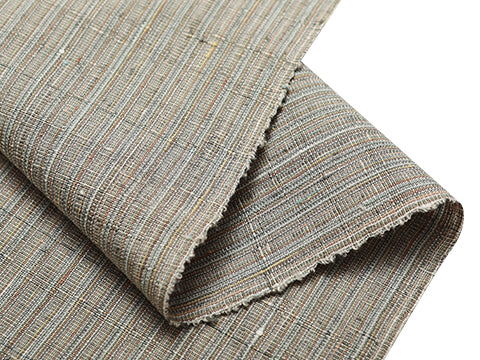 紬・綿・自然布
紬・綿・自然布
 袴
袴
 長襦袢
長襦袢
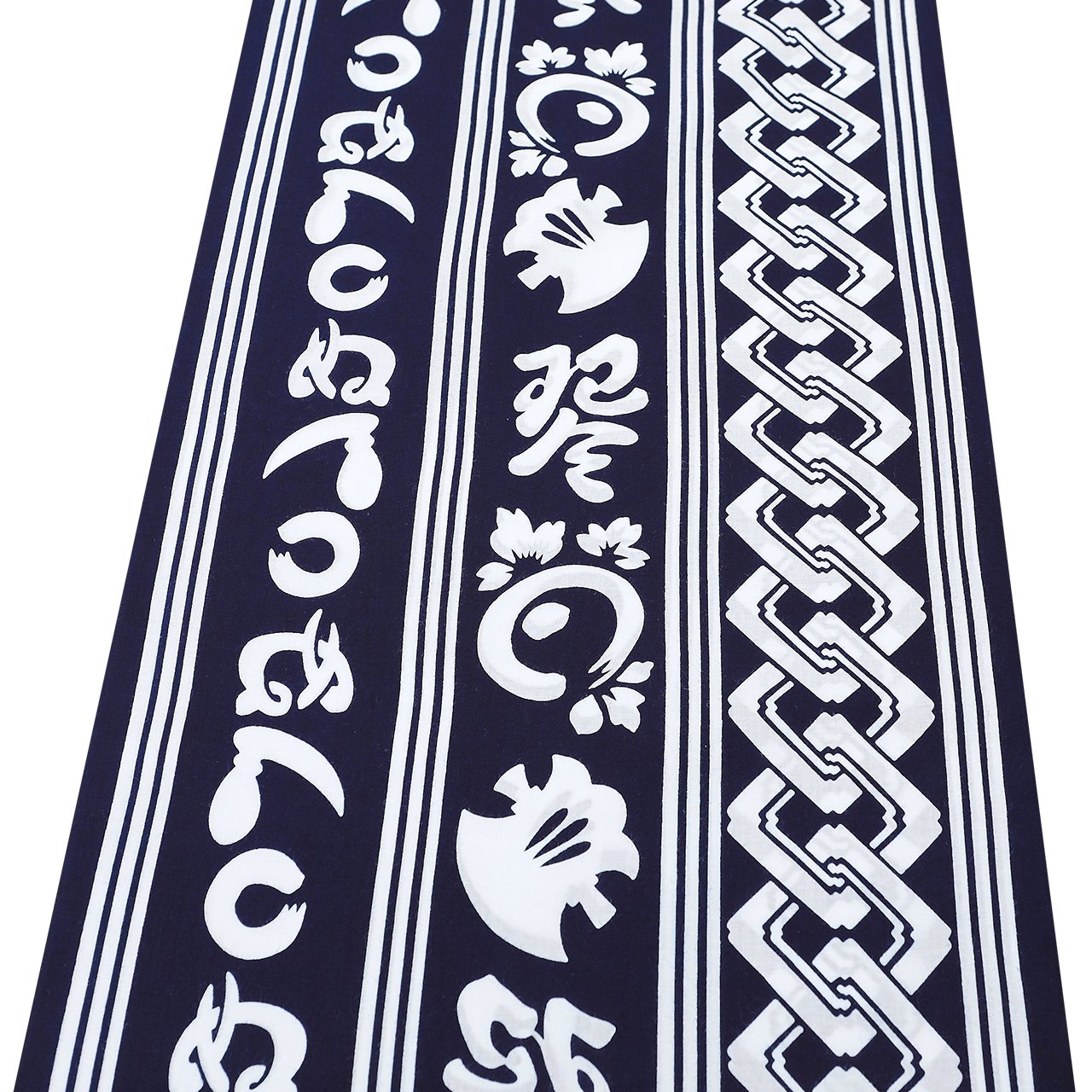 浴衣
浴衣
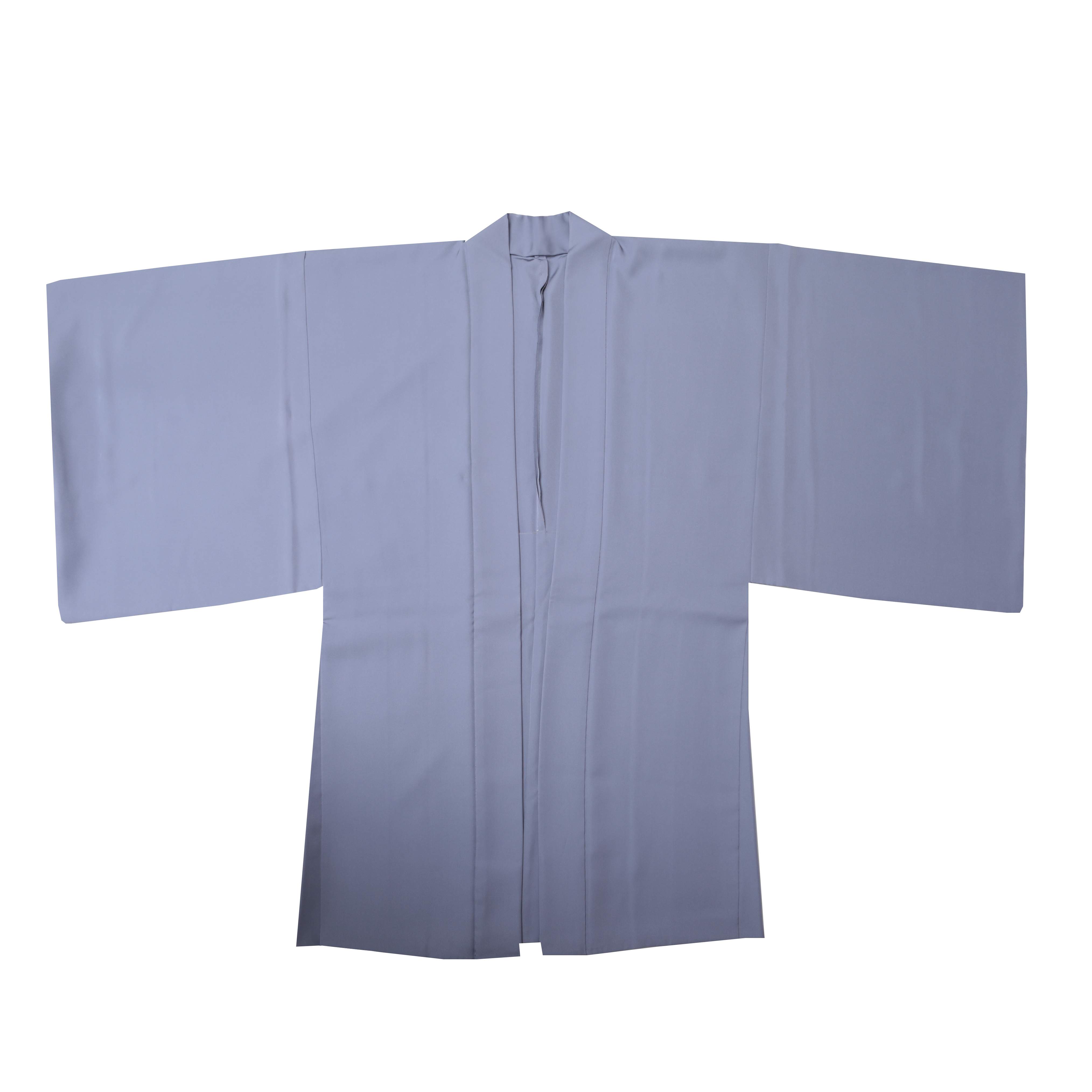 羽織・コート
羽織・コート
 額裏
額裏
 肌着
肌着
 履物
履物
 紋付
紋付
 書籍
書籍










